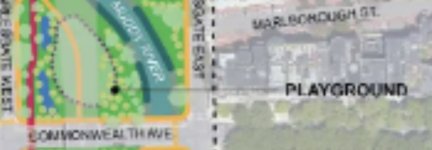What's the outrage, exactly?
I'm not seeing the flame-worthy hate here (other than the idea of keeping the overpass at all).
Yes, that's exactly where the outrage is coming from. It's bad that we're keeping the overpass at all. The overpass is terrible, and the benefits are questionable at best. Putting a couple hundred million dollars into fixing it means we're trying keeping it for the rest of all our lives, when the city would be vastly improved by demolishing it tomorrow.
I guess I'll stress just how terrible that overpass is compared to what it could be. It's currently a kind of no man's land. The whole park is functionally useless because the main span of the overpass cuts right though the middle. There's little space left, and what is left doesn't get used because no one wants to hang out under an car overpass. If you go poking around, it looks like homeless people store personal possessions under the ramps, but I usually don't see the people. They don't want to hang out there. It's a park pedestrians walk past quickly because it's loud and gross, and in the rain, the overpass drips runoff on people's heads. That's the environment we've built steps from a major transit hub, in one of the densest neighborhoods of the city. I really encourage you to go hang out in the park for a while. Bring a lawn chair. It's shit.
Now we could keep that overpass, or instead, revive the Olmstead-designed Charlesgate Park that finally relinks the Emerald Necklace.... Somehow, incredibly, those are our options. If we just tear down the overpass, it's kind of like Boston getting a brand new Olmstead-design park. They don't make those anymore. But we're sticking with the overpass that turns the area into a no man's land.
And again, even if your top priority is maintaining traffic volumes through this historic park, the benefits of the overpass are questionable. MassDOT apparently studied getting rid of the overpass a while back, before they did all the rehabilitation work on it about 10 years ago. MassDOT found they needed the overpass. But some researchers at Northeastern went through and found otherwise. I can't find their paper, but from these
slides it looks totally possible to have that current traffic run on surface streets just fine. (Current as of 2010.) They say MassDOT's negative findings were based on the assumption of lots more growing traffic in the coming decades, and it wasn't so clear where MassDOT's projected numbers were even coming from. Even if the Northeastern researchers are off a bit, that still means that keeping the overpass is only some marginal improvement over just surface streets and a park.
And on top of that, I don't actually want more cars in the city. Cars suck here. The city and state have clear policy goals of reducing driving in the city, increasing public transit mode share, and reducing greenhouse gas emissions. I support all of that. Keeping the overpass for predicted higher traffic volumes runs counter to all of those policy goals.
So yeah, I find the Bowker replacement
outrageous. Some of us really want to make Boston less car centric, and make the city prettier, get rid of some of these 1960's eyesores, and maybe even reach some climate goals. Tearing down the Bowker seems like the lowest hanging fruit. It wrecks an historic park, while not being obviously better at actually moving current traffic levels. And it will cost $100s of millions keep the status quo. So, just get rid of it. This isn't close. And MassDOT moving forward with the rebuild makes this probably the most disheartening project in the state.


